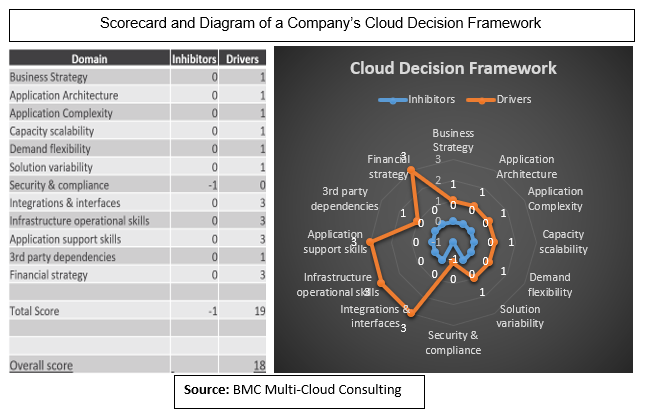A Common Scenario
Recently, I was invited to attend a customer’s futures’ strategy workshop. The agenda was wide ranging, encompassing customer experience, business innovation, the role of IT in supporting the business divisions and their initiatives, to how they should be exploiting the opportunities that cloud was offering to help them leapfrog their competitors.
The last item was of particular interest to me. And, it became even more interesting when one of their divisional leads stood up to declare that the IT group was not helping him in any way whatsoever with his Cloud Providers. Even further, he stated that he had no idea who in his team was using which services, from whom, and what his cloud costs were. He even went so far as to say that his present predicament was the direct result of the IT group not having stepped up in the first place and set cloud governance and standards for his teams to follow.
The CTO responded by reminding the divisional lead that it had been the latter’s decision to bypass the IT group and go directly to the cloud providers, as, and he quoted, “you guys are dinosaurs. You have no place in the fast moving and agile world my teams are in.” Then he invited the divisional lead to spend some time outside the workshop, where the CTO could explain just how far the IT organisation had come in setting up their own internal multi-cloud environment. He also explained how they were now opening that up to the business divisions as well as providing an alternative, cheaper option to the public cloud providers.
The reality, however, is that IT cannot build a strategy by itself in its own silo; they have to recognise that they are one of many service providers to the business, and the business is driving cloud requirements to providers who can meet them within the desired timescales and assured quality parameters. And the business thinks that the public cloud providers currently are the de facto choice. The IT group’s focus needs to shift to building a catalogue of services that their business units are requesting as they move into cloud. Only through a tight collaboration between IT and the business units can a strategy be created for a cloud portfolio that will meet the needs of all business unit stakeholders.
The first question that should be asked is: Why are we going to the cloud?
Are you just following the herd, or do you have a valid business justification for adopting the cloud? Be very clear from the start whether your goal is for business agility and speed to market, cost reduction, flexibility or performance. Note that it may be more expensive to operate workloads in the cloud depending on your application architecture, complexity, dependencies and the type of contract you sign up to.
Once you have determined the “Why,” there are four key areas that should be considered when setting your cloud strategy. By understanding and acting on these areas, your company will arrive at a sound cloud strategy that represents what the company as a whole needs to accomplish—for itself, for its customers as well as identifying the impact for all stakeholders and the IT solutions required to monitor, manage and maintain their cloud environments and workloads.
1) Cloud governance and service management skills: Supporting cloud – I heard a colleague state that support for the cloud was no different to that for on-premise. That is true, in the sense that you require the same types of staff capability. However, those resources need to know about the cloud, and that extends to support skillsets as well. You cannot take a traditional IT architect and expect them to step up to building cloud applications and environments without some serious enablement and up skilling. The same applies to service management tooling-–don’t expect the traditional discovery, event management and capacity management tools to work as-is.
IT and business units need to ask themselves: do we have the right tools and skills to be able to monitor, manage and support cloud? And even more importantly, what are the required parameters for the governance and compliance framework which will set and manage cloud standards and policies? Based on conversations with customers, governance, or the lack thereof, is consistently an issue. Hence, plans should be made to set up the governance framework, stand up a Cloud Centre of Excellence, and hire a Cloud Architect at the very beginning of the cloud journey. The latter is critical in both informing the strategy and to take a lead in setting the policies and standards across the business.
2) What should be moved into the Cloud: A Cloud Decision Framework – Taking advantage of cloud is much more than subscribing to IaaS, PaaS, and SaaS and hoping that the same support, compliance, and risk requirements will apply, or that they will be handled by the provider. An organisation needs to be able to determine which of their workloads should, and could be moved into the cloud. The key tool to help answer this is a decision framework. A decision framework looks at and scores the workload across the key domains that can act as an inhibitor or a driver for the cloud migration. 
The framework should be used across all of the key workloads and applications that the business has identified as a cloud candidate.
3) Changing your future application portfolio approach – Most organisations do not have a strict service portfolio management process. When you move applications to the cloud, organizations need to rethink how its customer-facing and revenue-generating applications and services (i.e., the life and blood of any business) are going to be managed throughout their lifecycle once they are migrated.
The next consideration for the portfolio is related to Saas applications. How do you exploit SaaS? Can you replace existing software with SaaS models? Productivity and collaboration tools are key examples where a shift to SaaS models can deliver immediate impact. The advantage of such changes is that users do not experience any impact of the move. They will use the same functionality as before delivered through a different mechanism.
Now, it’s important to consider whether you can start with IaaS, PaaS to start gaining immediate short-term benefits. Some believe you can start there and then evolve to cloud native applications as your developers and architects mature in their knowledge of cloud technologies and gain the skills needed to take full advantage. This is where the Cloud Centre of Excellence needs to step in and drive the application portfolio roadmap, informing the developers of the benefits and pitfalls of trying to move, re-platform and re-code.
4) Service Brokerage – We’ve talked about the importance of Cloud Governance – and I will talk in depth on that in my next blog – in setting and driving standards. Of equal importance is the future role of the current I&O organisation which needs to evolve to that of a service broker. When making this shift to a service broker, especially for cloud services, the I&O organization needs to provide the “guard rails” as to how the business, business functions, and the developers best leverage cloud. Specifically, they need to provide guidelines on when and how to use:
- Public cloud services,
- Private cloud services from public cloud providers, and
- Managed private cloud services supported by service providers
What this requires is the creation of a flexible service catalogue, underpinned by services from internal and external providers. Of course, all services will need to be delivered at the same speed, with the same flexibility, performance, and support levels irrespective of who is providing them. This service assurance space is where the I&O organisations steps into; as a service broker it becomes a seamless interface between all service providers and their own business.
To summarise, if you want to become “Cloud Smart,” then take some time to consider what that actually means for all stakeholders, and what has to be in place to succeed. Governance is an absolute must to provide the guard rails and avoid the “sticker shock” when the cloud bills start to land on the CFO’s desk. Following that, IT needs to be clear on what to move, when and how to get the maximum value while reducing risk as well as building the right cloud services portfolio to truly become a cloud service broker to the business units. I will explore governance, migration, and optimization strategies in upcoming blogs, but let me re-iterate that cloud is here to stay, and will be increasingly important in underpinning business needs for speed and agility. A cloud strategy needs to be effectively aligned with those requirements, and also provide clear awareness of the impacts across all stakeholders. For IT, this means pivoting from on-premise service management to multi-cloud operations, and that has proven difficult for many. However, with a clear, shared strategy, and a plan to fortify it, IT can ensure business units fully realize the benefits that cloud has to offer.
These postings are my own and do not necessarily represent BMC's position, strategies, or opinion.
See an error or have a suggestion? Please let us know by emailing blogs@bmc.com.






